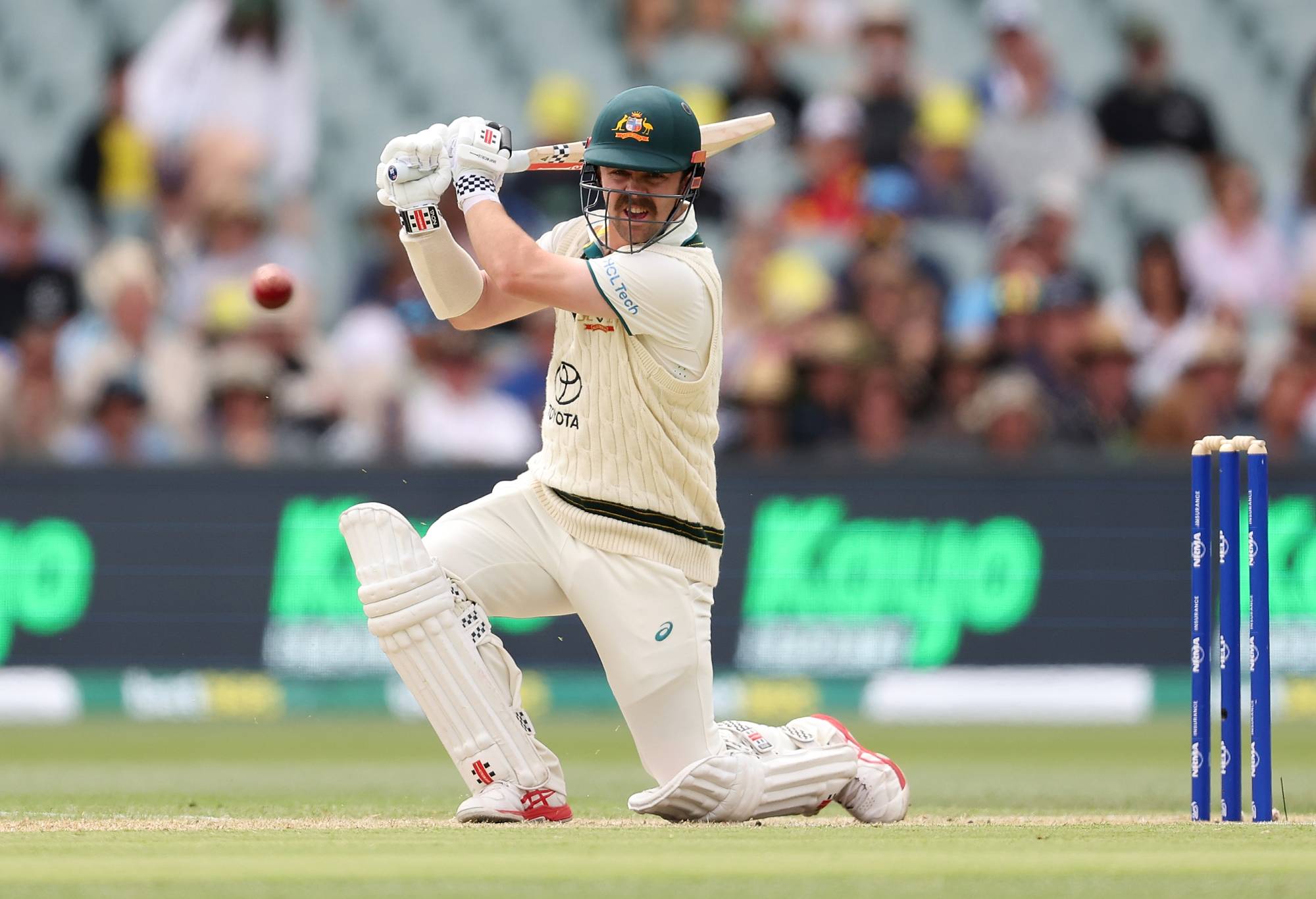Just who will open the batting this Test summer alongside Usman Khawaja is causing great external speculation and considerable internal consternation as Australia’s cricket hierarchy attempts to quell a debate they created.
So it was no surprise that when local Adelaide media heaved down a rib tickler late last week at Travis Head about where he wanted to bat in the Test team, the thumping left-hander took evasive action.
“From my side of things, I’ve got no favourite position,” Head said after signing on again for the Adelaide Strikers. “I’ve only got a position that is best for the team and what the team needs from me.”
Chairman of selectors George Bailey had already tried to bring down the shutters last week. After announcing that all-rounder Cameron Green would be out for the season following back surgery, Bailey confirmed the failed Steve Smith as opener experiment was over and slotted him back to No.4.
This has left a gaping hole as Khawaja’s plus-one and no shortage of potential candidates to fill the void.
Head, 31 next month, should not be one of them. His current position at No.5 in the Test team is plenty high enough.
Australia’s most dynamic white-ball player is currently on extended paternity leave after a hectic 12 months as he and wife Jess await their second child. Ironically perhaps, this means Head will miss the one-day series against Pakistan. The near-invisible first match begins at the MCG on November 4, the evening before the Melbourne Cup.
Head has been in seductive form at the top of the order in white-ball cricket, becoming a national hero when he trounced India in the World Cup Final with 137 from just 120 balls to set up a six-wicket victory almost a year ago. Head was player of the match, and celebrated for days.
Just last month he hammered an unbeaten 154 against England in the opening match of a barely noticed one-day series in England that Australia won 3-2. Head was player of the series.
He became the world’s highest-ranked T20 player after being Australia’s leading run scorer during the World Cup in the West Indies earlier this year and is Australia’s top-ranked one-day player.
Head was also player of the match in Australia’s inaugural World Test Championship final victory over India at The Oval ahead of last year’s Ashes series. He scored 163 at almost a run a ball, with 25 fours and a six, to change the match in a 295-run partnership with Smith, who made 121.
On the surface this suggests Head is primed for India heading into this summer’s five Test series, having taken them down last time the teams met and picked up trophies and accolades around the world.
Not true.

Travis Head (Photo by Shaun Botterill/Getty Images)
The exaggerated left-hander’s penchant for going straight back, giving himself room to carve the ball through the off side, is both a strength and a weakness. It gives the bowler a narrow channel to operate in but also increases the chances of nicking off.
It also makes Head susceptible to the short ball coming at him, leaving him nowhere to go except riding the climbing delivery, which in the past has both damaged his body and cost him his wicket.
Remarkably during that history-making counterattack against India in early June last year, it wasn’t until Head reached the 90s that India began to employ short-ball tactics with their quality pace attack.
India’s bowling coach Paras Mhambrey felt that his team had missed a trick, something they’re unlikely to let happen again this season.
“I thought that’s one definitely discussed among our bowlers,” said Mhambrey when asked about short-pitched bowling during that Oval Test. “We always felt that that was an area that we could exploit against him.”
That innings is statistically the high point of Head’s Test career.
His average climbed to 47.62, an imposing figure in Test cricket.
In his 12 Tests since Head’s average has been 28.68, the worst of any Australian batter during that period including the often maligned David Warner before he retired. Head’s career average is now 41.75 following a tour of New Zealand where his top score was 29.

Travis Head. (Photo by Paul Kane/Getty Images)
He did make a match-winning century in Adelaide against the West Indies, much to the delight of his home crowd. His 119, again at almost a run a ball, ensured the first Test on a surprisingly lively pitch would creep into a third morning. The innings once again highlighted how dangerous Head can be.
But the elastic between risk and reward is stretching to the point where it will go twang if Head can’t find another of those match-changing moments. In the 16 innings since the start of last year’s Ashes, that Adelaide century is the only time Head has managed to reach 50 in Test cricket.
This contrasts with seven of his last eight one-day series, where he averaged between 44 and 82, scoring all of his six one-day hundreds.
His paternity leave should give Head plenty of time to practice against the red ball.
>Cricket News

%20(3).jpeg)




0 Comments